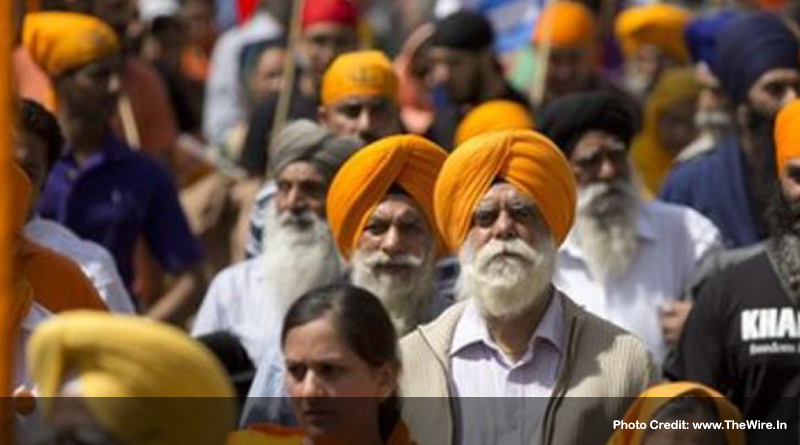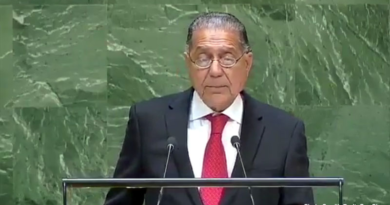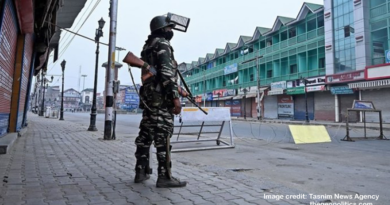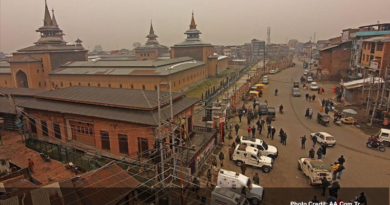Shared Trauma Underpins Sikh-Muslim Solidarity in Kashmir
The state should remember that its repression will only deepen solidarities amongst persecuted minorities and also Hindus who recognise the perversion of their faith.
On January 19, many Indians mourned what is considered to be the darkest episode in Kashmir’s history: the mass exodus of Kashmiri Pandits from the Valley in 1990 after they became the targets of heightened militancy in the region.
A decade after their exodus, Kashmir’s Sikh minority feared that they were the new targets of militants when unidentified gunmen killed thirty-five Sikh men on March 20, 2000, in a small hamlet named Chithi Singhpora in the Anantnag district.
Shocked at this turn of events, many in Kashmir feared a second exodus, this time of Kashmir’s Sikh community. But almost two decades later, a majority of the community continues to live in the Valley. Kashmiri Sikhs, who have now been in the region for over three generations, live in harmony with their Muslim counterparts, despite pervasive violence from both militants and the state.
I spent a year in Kashmir in 2018 as part of my PhD dissertation trying to understand why the Sikhs, a micro-minority like the Pandits, stayed. I interviewed over 70 Sikh families and 30 Muslim families.
What I learned was as eye-opening as it was unexpected.
When the calm returned and new facts emerged, the Indian state’s narrative surrounding Chithi Singhpora’s killers, which it alleged were militants from Lashkar-e-Taiba and Hizbul Mujahideen trained in Pakistan, started to fall apart. Inconsistencies in the investigation and the revelation that the alleged militants on whom the blame was pinned were actually locals from a village called Panchalthan (killed in the Pathribal encounter five days later), made people believe that this was the ‘deep state’ at work.
Who perpetrated the Chithi Singhpora massacre might never be known, but for both Muslims and Sikhs in Kashmir, it was a reminder of their precarious position as minorities in the Indian Union. As 60-year old Nanak Singh, the only survivor of the Chithi Singhpora massacre articulated, “we are scapegoats”.
Over time, with hopes of any fair inquiry fading, Sikh anger against the Muslims dissipated and the difficult work of reconciliation began. Rather than leading to a mass exodus like that of the Kashmiri Pandits, both the Sikh and Muslim communities recognised the communal intent of the massacre and worked hard to prevent the weaponisation of this tragedy.
While reconciliation is never a process that is complete, it has led to the emergence of important solidarities between the two communities. Tested as they are by the difficult circumstances in the Valley, their persistence makes it possible for Sikhs to continue living in Kashmir.
Despite violence, most of my respondents made it clear that they faced no religious persecution from Muslims in Kashmir. I asked Geet Kaur*, who lost her husband in the massacre, whether she feared another massacre. She smiled at me before replying and said, “(E) kende ne asi kyun mariye apne Sikh bhravan nu? Aaj kitni militancy chal rahi hai, kade ni sadde naal kuch kitta. Kade police waliyan nu maarde ne ta Sikh hai ya Muslim hai nahin dekhde (They ask, why should we kill our Sikh brothers? Even in this heightened militancy, they haven’t let any harm come upon us. When they (the mujahideen) kill the police, they don’t see whether he is Muslim or Sikh)”.
Recounting the events of Chithi Singhpora, Kirpal, a 20-year-old prominent Sikh activist, told The Wire, “Jad Chithi Singhpora hoya si, saare leader sadde agge aake maafi mangde si (When Chitti Singhpora happened, all the [Muslim] leaders asked for our forgiveness)”.
In contrast, he said, India’s leaders showed little empathy when over 3,000 Sikhs were killed in the 1984 pogrom in Delhi and other cities following Indira Gandhi’s assassination. Amanpreet, a 20-year-old student and Sikh activist, reiterated this sentiment and noted that if anything happened to the Sikhs here, the entire political leadership “will come within minutes and apologise”.
Not only is there mutual respect for the ‘other’ but there is the explicit recognition and practice of religious pluralism on the ground – what sociologist T.K. Oommen calls ‘consensual equilibrium’. One example of this is the relaxation on mobility restrictions that Kashmir’s local administration often makes to accommodate the practice of Sikh religious events. Yet another is the convivial acceptance of not eating together because of the different techniques of meat preparation in Sikh and Muslim customs.
For Kashmir’s Sikhs and Muslims, there is little trust in, and no willingness to depend on a state that they believe has failed them on numerous counts. The Sikhs feel deeply hurt that little has been done to deliver justice for victims of Chithi Singhpora and Delhi, as do the Muslims for the routine state excesses that have gone unpunished.
By building cross-community solidarities, both find, as sociologist Shruti Devgan writes, legitimacy for their own suffering in the experiences of the other.
As minority communities that have faced violence at the hands of the Indian state, and at different points of time, have fought for their independence from India, both Sikhs and Muslims in Kashmir harbour a shared understanding of the dangers that minorities face in an increasingly polarised India.
Many of my respondents commonly expressed empathy with Kashmiri Muslims during interviews and explained this by saying, “Assi ta sab dekheya hai (we have witnessed all this before)”, while drawing connections to Punjab’s own independence movement.
The shared sense of persecution saw Sikhs come out in support of Kashmiri Muslims the day after the Pulwama attack in February 2019, helping Kashmiris find their way back to safety; they were also among the loudest constituencies protesting the mistreatment meted out to Kashmiri Muslims in the rest of the country after Kashmir’s special status was scrapped.
In these times of divisiveness, the examples of Sikh-Muslim solidarities in Kashmir should serve as an important lesson for India’s current administration.
Despite trying hard to reign in protests that erupted after the Citizenship Amendment Act was signed into law, both through force and misinformation, the Modi government has been struggling to contain the fallout.
Over the last few days, Indians of all denominations have come out on the streets in support of their Muslim counterparts, contesting the Prime Minister’s suggestion that those who create violence can be identified by their clothes, and defying the administration’s attempts to paint these protests as ‘Muslim only’.
At Shaheen Bagh, the government’s attempts to add communal hues to the protest are actively being been countered. Hundreds of people at Shaheen Bagh commemorated the Pandit exodus with a two-minute silence. Prominent Pandit activist M.K. Raina, who was invited to speak at the protest site, remarked that the show of solidarity by Shaheen Bagh reflected a shared understanding of the pain that persecuted minorities have experienced in India. Just days before, a Sikh jatha performed kirtan, Hindus performed yagna, Muslims read from the Quran and Christians from the Bible.
For the many who continue to protest at Shaheen Bagh, it is not merely the site of India’s modern-day satyagraha, it is a space for shared commemoration. Of the injustice that Sikhs remember from years of state brutality in Punjab. The forgotten promises made to Pandits to repatriate them to their homeland. The demonisation that Muslims face every day in the nation they chose allegiance to after its painful partition. The caste violence that continues to dehumanise Dalits.
In coming together against the attack on India’s constitutionally enshrined secularism, the protestors at Shaheen Bagh are challenging the state’s hegemonic narratives surrounding the CAA and articulating resistance to any one monolithic idea of India, by draping the tricolour and singing Faiz in one voice, while still openly expressing their respective faiths and identities.
Far from being a deterrent, the state should remember that its repression will only deepen solidarities not only among persecuted minorities, but also among Hindus who recognise the perversion of their faith, and students who don’t want to inherit a bigoted country.
*Names have been changed to protect identities.
Data for this article has been retrieved from interviews conducted by the author between March-October 2018 in the Kashmir Valley, as part of her dissertation research.
Khushdeep Kaur Malhotra is a fifth-year PhD candidate in Geography and Urban Studies at Temple University.
Published in TheWire.In, 23-Jan-2020
Courtesy:
https://thewire.in/rights/kashmir-pandits-sikhs-muslims




